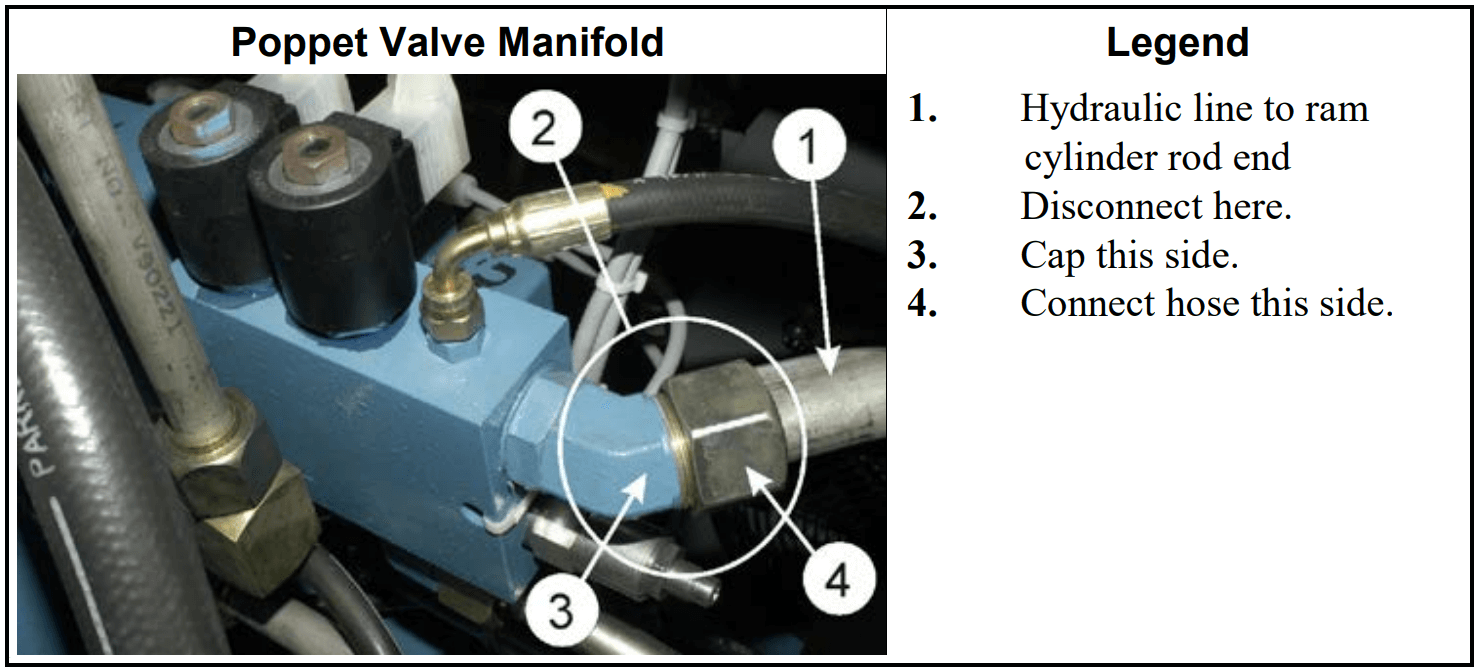About Ram Piston Seal Replacement
A certain amount of seal leakage is normal. Ram piston seal replacement is a major service procedure requiring expertise and heavy lifting equipment. Before proceeding with this servicing, evaluate the costs and benefits. As a general rule, avoid this servicing until:
- all other possible causes are ruled out, and
- maximum achievable pressing pressure is unacceptable.
As the ram begins pressing a load of goods, the goods compress, and the ram piston moves down slightly, oil in the rod side of the ram exits through the rod-side tubing. As the goods are compacted and ram movement decreases, this flow of oil should decrease. If the flow increases, this indicates that a significant amount of oil is leaking past the piston seals as pressing pressure increases. Test this as follows:
- Permit a load of goods to transfer into the press, but immediately take the the machine off line. The can will be down and the ram up.
- Lower the ram (manual mode 07) just until the diaphragm is resting on the goods.
- Lockout/tagout power to the machine.
- Referring to Figure 1, modify piping as follows (cap and hose are provided in kit KYSSTRBLSH):
- Disconnect the ram rod-end (ram up) tubing at the poppet valve manifold.
- Cap the manifold connector.
- Connect a hose to the disconnected tubing. Run the other end of the hose into a bucket.
- Restore power and, while observing the flow of oil into the bucket, call for pressure (Manual mode 09). If flow decreases as the goods are pressed, the piston seals are good. If it increases, the seals may need to be replaced. However, a certain amount of seal leakage is normal.
- Lockout/tagout power and restore the permanent connections.


